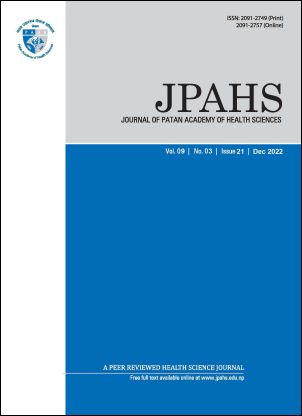Analysis of cesarean section using Robson’s criteria in tertiary care center
DOI:
https://doi.org/10.3126/jpahs.v9i3.52265Keywords:
Cesarean Section, Failed Induction, Preterm Cesarean Section, Cesarean Audit, Robson’s Ten Group Classification SystemAbstract
Introduction: This study aims to analyze all the women delivering in our institute according to the Robson’s classification. Robson’s ten group classification system (TGCS) endorsed by WHO, is a global standard tool for assessing, monitoring and comparing cesarean section rates at all levels.
Method: This cross sectional study was conducted in the department of obstetrics and gynecology, Patan hospital, Patan academy of health sciences (PAHS), Lalitpur, Nepal over 12 months’ period. All women who delivered during this period were classified according to the Robson’s classification (TGCS) into a specific group. Relative size and overall cesarean section rate of each group were calculated.
Result: A total of 4,985 cases were analyzed. The cesarean section rate was 57.7%. Group 1+2 represented nearly half (49%) of the obstetric population served during the study period. Group 2A was found to be the highest contributor (27.4%) followed by Group 5 (22.8%) and Group 1 (13.0%). In terms of indication for cesarean section -Fetal distress and previous cesarean section were found to be the most common indications. Similarly, nulliparous women were three to four times more likely to be delivered by cesarean section when labor was induced.
Conclusion: From this study, we can conclude that for an effective reduction in the overall high cesarean section rate in our Institution, we need to focus on a more stringent protocol for inducing labor especially among nulliparous women and to practice evidence based guidelines. Redefining failed induction needs to be considered critically as well.
Downloads
Downloads
Published
How to Cite
Issue
Section
License
© Journal of Patan Academy of Health Sciences
Submission of the manuscript means that the authors agree to assign exclusive copyright to JPAHS. All authors must sign a Copyright Transfer and Author Agreement form upon submission of the manuscript to the Journal. The work shall not be published elsewhere in any language without the written consent of JPAHS. The articles published in this journal are protected by copyright which covers translation rights and the exclusive rights to reproduce and distribute all of the articles printed in the journal.




